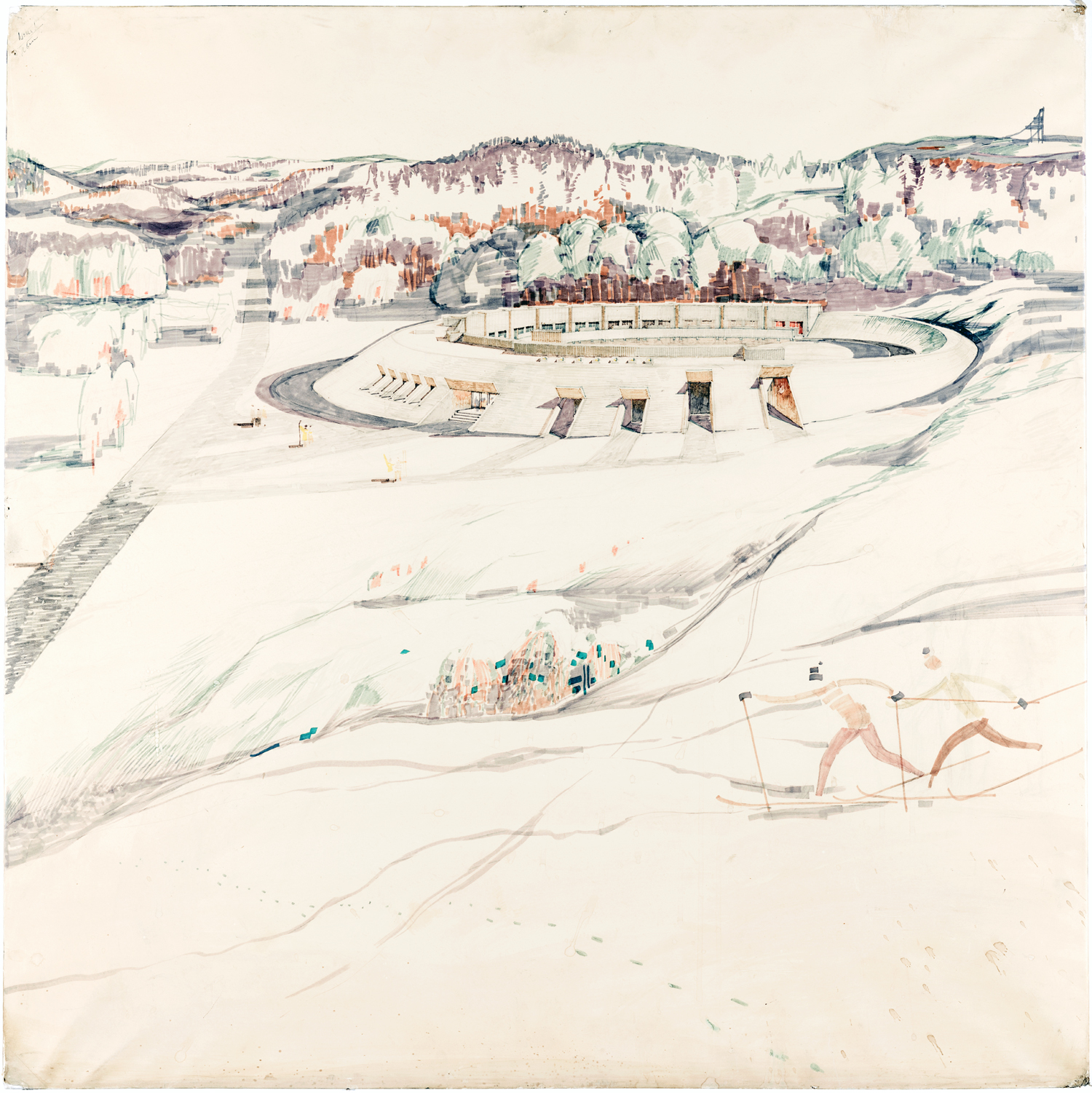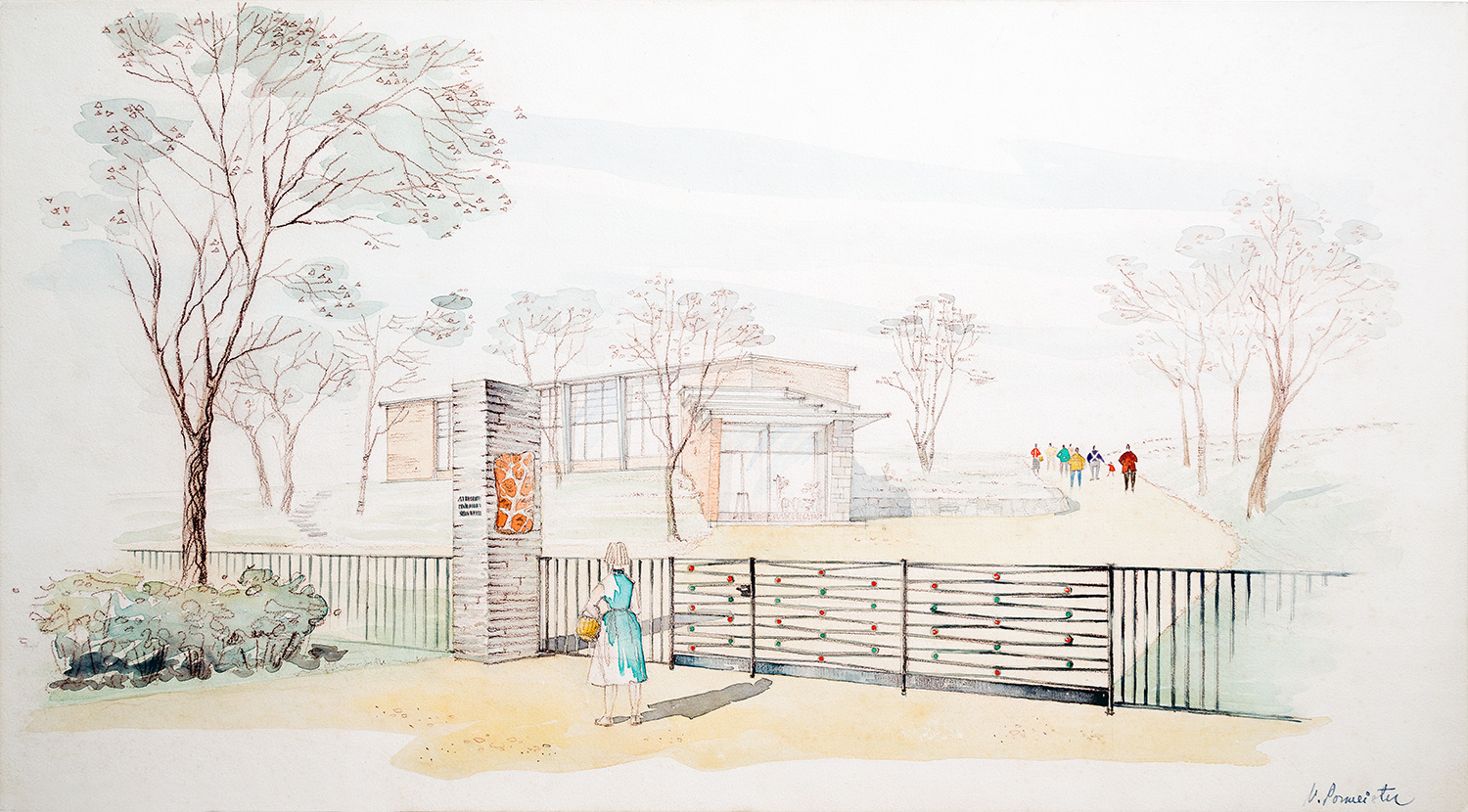Tag Archives: landscape architecture
Garden planning and landscaping sketch

Vaike Parker, 1971. EAM 45.1.8
The house located in Merivälja district in Tallinn was acquired by the Association of Journalists in the 1960s and soon transformed into the institution’s holiday home. A thorough design for the garden of the house was needed to organise bigger events. It was commissioned from the renowned landscape architect Vaike Parker. The sketch depicts architect’s first thoughts before drawing up a complete design – these thoughts have been sketched on delicate tracing paper using a soft pencil. Listed are the objects that complement the landscaping details, e.g. a water canal, a deck chair and a screen. In 2010, Vaike Parker
Veel: 1970s, landscape architect: Vaike Parker, landscape architecture
Tehvandi Ski Centre

Peep Jänes, Tõnu Mellik, Allan Murdmaa (drawing), 1974. MEA 4.6.2
This modern ski centre was built in southern Estonia by commission of the State Committee for Sports of the USSR, and was intended foremost for training Soviet winter athletes. Its location in Tehvandi, on the fringes of Otepää (Estonia’s “winter capital”), was a proper choice, offering a wealth of athletic opportunities amid a landscape of rolling hills. The architects’ vision of a modern centre embedded in an artificial hill, sketched here in perspective, was realised to almost exact detail. Architects’ manner of approaching their task was location-based. Copying Otepää’s hilly landscape, they nestled another spherical form into nature. The Space Race also had a certain influence on the structure’s relatively technical form. The Union of Estonian Architects gave the watercolour to the museum in 1993. Text: Sandra Mälk
Veel: 1970s, architect: Allan Murdmaa, architect: Peep Jänes, architect: Tõnu Mellik, landscape architecture, perspective drawing
Flower Pavilion at Pirita Road in Tallinn

Valve Pormeister, design 1958, completed 1960. MEA 33.1.22
Architect Valve Pormeister, who graduated university in garden- and park design, claimed that nature was an intrinsic component of her, which was why she often put landscape first in her works. The Flower Pavilion melts into the landscape with a sensitivity characteristic of the architect’s signature. In addition to organic architecture, the building, which step-by-step ascends a hillside, also represents Finnish-influenced cornice architecture. This approach was rare and reviving (i.e. Nordic) in Soviet Estonian society at the time, as the rigidity of the early 1950s still echoed. The detail-rich interior sketches demonstrate the architect’s great enthusiasm for designing flower exhibitions – an activity she also practiced afterward. Text: Sandra Mälk
Veel: 1950s, architect: Valve Pormeister, landscape architecture, watercolour





